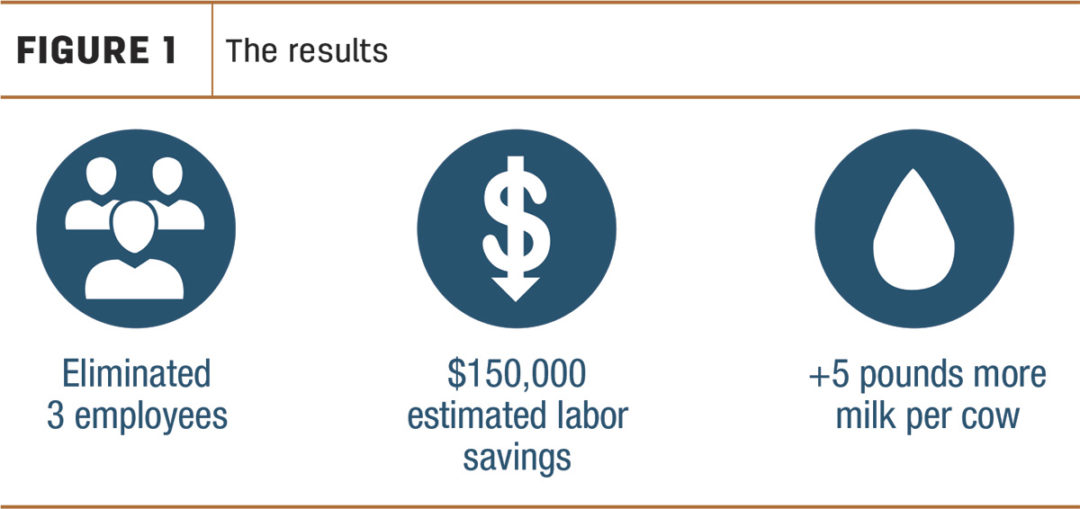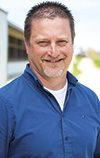Ask most dairy producers what their biggest headache is right now, and you will likely hear one word: labor.
Finding good people and retaining them is a common struggle across all industries, and we are feeling it on our dairies in ways we never have before. However, when I get in the trenches on dairies to uncover opportunities for greater efficiency and profitability, what I find may come as a surprise. Many of those same dairies that struggle to keep a dependable labor force are, in reality, overstaffed.
Here’s how we helped a 5,000-cow dairy eliminate three employee positions, save $150,000 in labor costs and increase 5 pounds of milk per cow (Figure 1).

These organizational charts show the employee structure when I started working with the dairy (Figure 2) and then how the changes we made resulted in three fewer full-time positions, which then saved the dairy roughly $50,000 in labor costs for each of those positions (Figure 3). As you can see, we were able to eliminate a full-time herd manager, feeder and milker.


How we eliminated a herd manager
After doing a thorough walk-through and review of the dairy, I noticed the maternity and fresh cow area was overstaffed. They had an intense health monitoring protocol, performed with thorough detail, but it was actually doing more harm than good. Not only were fresh cows locked up for extended periods of time, but the protocols were sucking up the employees’ time as well. Meanwhile, the herd manager positions were inefficient. Not all three of the employees were effectively completing their duties, and the most qualified people to perform them were in the maternity. Together, these scenarios opened up the opportunity to take a couple of maternity pen workers and crosstrain them to assist with herd manager activities. By doing this, the maternity area still had access to good people, but an entire herd manager position was no longer necessary.
How we eliminated a feeder
The three feeder positions on this dairy included two feed delivery people and one person pushing up feed. Again, we evaluated the time being spent in this area compared to others and saw where we could crosstrain a maternity pen worker to also push up feed. Because of this move, there was no longer a need for a third full-time feeding position.
How we eliminated a milker
In the milking parlor, we also noticed some inefficiencies. The protocol at that time included one person forestripping cows, followed by another person dipping. We changed the protocol to having the same person perform both of those duties, which resulted in the need for one less full-time milking position.
It’s common for dairy producers to fear that reducing labor could have negative implications on milk production. In this particular case, the opposite was true. Milk production actually increased by 5 pounds per cow. Putting the right people in the right places led to more prompt feed delivery and less time in lockups.
Perhaps now you are reconsidering how your labor organizational chart looks. Are you overstaffed in some areas and understaffed in others? Who on your team could be trained to jump in and assist with other duties? If you find yourself asking these questions, here are a couple of things you can do:
- Create your own organizational chart as a visual of who is responsible for what.
- Spend time regularly, in the barn and parlor, shoulder-to-shoulder with your people.
- Evaluate how well they are able to perform their duties. You may find they are overqualified and could be challenged more. On the other hand, you may discover that of their main responsibilities, they are truly only proficient in one or two areas. You may actually be paying multiple full-time people to compensate for each other’s weaknesses instead of just one full-time person who can do it all.
- If you truly want the competitive edge, get some outside eyes to come in and show you where the efficiency drains are and where the opportunities for improvements exist.
At the end of the day, in a competitive labor environment, giving a critical look at the employee structure can reveal valuable information for making decisions. And in this case, those decisions helped this dairy milk more cows with fewer people, with a bump in milk as an added bonus.






